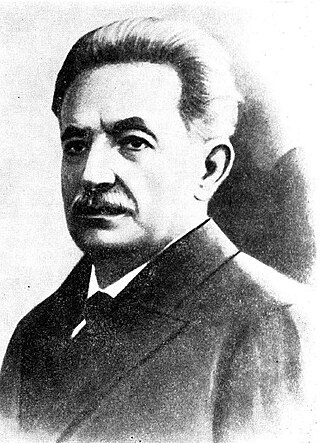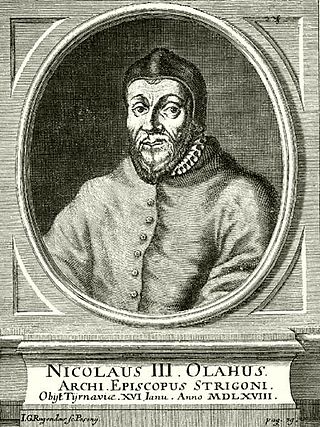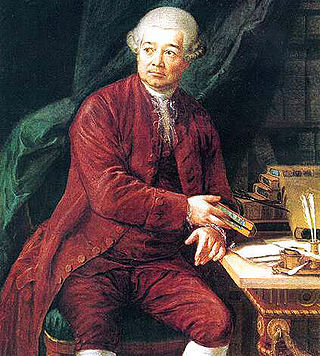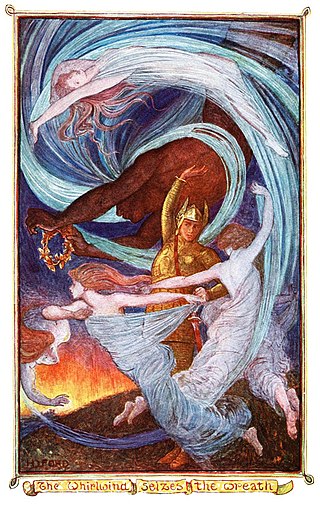External links
| International | |
|---|---|
| National | |
| People | |
| | This article about a German writer or poet is a stub. You can help Wikipedia by expanding it. |
Johann Christoph (von) Jordan (died 1748) was a German bureaucrat and antiquary. He wrote in Latin, and his most important work was a history of the Slavic peoples, De Originibus Slavicis, published in 1745.
Originally from the Rhineland, Jordan served as a senior official in the Bohemian Court Chancery (Böhmische Hofkanzlei). [1]
Romanian literature is the entirety of literature written by Romanian authors, although the term may also be used to refer to all literature written in the Romanian language or by any authors native to Romania.

The Bay of Kotor, also known as the Boka, is a winding bay of the Adriatic Sea in southwestern Montenegro and the region of Montenegro concentrated around the bay. It is also the southernmost part of the historical region of Dalmatia. The bay has been inhabited since antiquity. Its well-preserved medieval towns of Kotor, Risan, Tivat, Perast, Prčanj and Herceg Novi, along with their natural surroundings, are major tourist attractions. The Natural and Culturo-Historical Region of Kotor was designated a UNESCO World Heritage Site in 1979. Its numerous Orthodox and Catholic churches and monasteries attract numerous religious pilgrims and other visitors.

Ioan Slavici was a Romanian writer and journalist from Austria-Hungary, later Romania.

Lech, Czech and Rus refers to a founding legend of three Slavic brothers who founded three Slavic peoples: the Poles, the Czechs, and the East Slavs, particularly Lechite Polans and Ruthene Polans. The three legendary brothers appear together in the Wielkopolska Chronicle, compiled in the early 14th century. The legend states that the brothers, on a hunting trip, followed different prey and thus travelled in different directions: Lech in the northwest, Czech in the west, and Rus' in the northeast. There are multiple versions of the legend, including several regional variants throughout West Slavic, and to lesser extent, other Slavic countries that mention only one or two brothers. The three also figure into the origin myth of South Slavic peoples in some legends. Their stories are often, to some extent as well, used as a myth to understand the eventual foundation of the Polish, Czech and East Slavic states, in accordance with the legend.

Panciu is a town in Vrancea County, Romania. It lies on the river Șușița, in the southern part of Western Moldavia, 30 km (19 mi) northwest of Focșani. It has a population of approximately 7,600. It administers five villages: Crucea de Jos, Crucea de Sus, Dumbrava, Neicu and Satu Nou.

Nicolaus Olahus ; 10 January 1493 – 15 January 1568) was the Archbishop of Esztergom, Primate of Hungary, and a distinguished Catholic prelate, humanist and historiographer.

Șiria is a commune in Arad County, Romania. According to the 2002 census it had 8,140 inhabitants.

De viris illustribus is an unfinished collection of biographies, written in Latin, by the 14th century Italian author Francesco Petrarca. These biographies are a set of Lives similar in idea to Plutarch's Parallel Lives. The works were unfinished. However he was famous enough for these and other works to receive two invitations to be crowned poet laureate. He received these invitations on exactly the same day, April 8, 1341, one being from the Paris University and the other from the Roman Senate. He accepted the Roman invitation.

The Ioan Slavici Classical Theatre is a theatre in the city of Arad, in the western side of Romania.

Adam František Kollár de Keresztén was a Slovak jurist, Imperial-Royal Court Councillor and Chief Imperial-Royal Librarian, a member of Natio Hungarica in the Kingdom of Hungary, a historian, ethnologist, an influential advocate of Empress Maria Theresa's Enlightened and centralist policies. His advancement of Maria Theresa's status in the Kingdom of Hungary as its apostolic ruler in 1772 was used as an argument in support of the subsequent Habsburg annexations of Galicia and Dalmatia. Kollár is also credited with coining the term ethnology and providing its first definition in 1783. Some authors see him as one of the earliest pro-Slovak, pro-Slavic, and pan-Slavic activists in the Habsburg monarchy.
The Mill of Good Luck is a 1955 Romanian drama film directed by Victor Iliu. It was entered into the 1957 Cannes Film Festival. It is a version of the novella Moara cu noroc, published in the collection Nuvele din popor (1881) by Ioan Slavici.
Ioan Slavici National College is a public day high school for students aged 10 to 18, established in 1812, and located in Satu Mare, Romania. The school is named after the great Romanian writer and journalist Ioan Slavici. The Ioan Slavici National College is one of the only four national colleges located in Satu Mare alongside Mihai Eminescu, Kölcsey Ferenc and Doamna Stanca.

Gabriela Gunčíková, also known as Gabriela Gun, is a Czech singer. Her singing voice has been described as a cross between Sheryl Crow and Ann Wilson from the band, Heart. She was the runner-up of the second season of Česko Slovenská SuperStar and won the New Artist award at the 2011 Český slavík awards. Gunčíková was a touring vocalist of the Trans-Siberian Orchestra from 2014 until 2015. She represented the Czech Republic at the Eurovision Song Contest 2016 in Stockholm with "I Stand".
Eveline Slavici is a Romanian former artistic gymnast. She competed at the 1952 Summer Olympics.

Moise Nicoară National College is a public day high school in Arad, Romania.

Matei Basarab National College is a high school in Bucharest, Romania, located at 32 Matei Basarab Street, Sector 3. It opened in November 1860, one of two secondary schools to open that year in the Romanian capital, the other being Gheorghe Lazăr Gymnasium, in order to supplement the older Saint Sava High School.

Vintilă Russu-Șirianu was an Austro-Hungarian-born Romanian journalist, memoirist, and translator.

Prokopije or Procopius was an Austro-Hungarian cleric of the Romanian Orthodox and Serbian Orthodox churches who ultimately served as the latter's Patriarch at Karlovci. He was born in the Banat as a subject of the Austrian Empire, his ethnic affiliations alternating between the Serb and Romanian communities. Ivačković's early life was spent in Serbian Orthodox institutions, and he was seen as a Serb loyalist before he became Bishop of Arad. During the 1860s, he expressed support for Romanian nationalism, primarily as a founder of the National Aradian Association for Romanian Popular Culture. He backed Andrei Șaguna's bid to set up the Romanian-centered Metropolis of Transylvania, becoming its suffragan bishop; during the Serb–Romanian church partition, he extended the Arad Bishopric south into the Banat.

"The Fairy Aurora" is a fairy tale written by Ioan Slavici and published in June 1872. Mihai Eminescu urged him to write his first story, which was read at Junimea in two sessions and was published in the magazine Convorbiri Literare.

Piarist High School is an architectural ensemble in Timișoara, originally intended for the high school established by the Piarist Order. The Secession-style ensemble, comprising a high school, a chapel church and a boarding school, was designed by László Székely and opened in 1909. After World War II, some faculties of the Timișoara Polytechnic School functioned here. Gerhardinum, the high school of the Roman Catholic Diocese of Timișoara, is currently operating here. The ensemble is inscribed in the list of historical monuments in Romania.